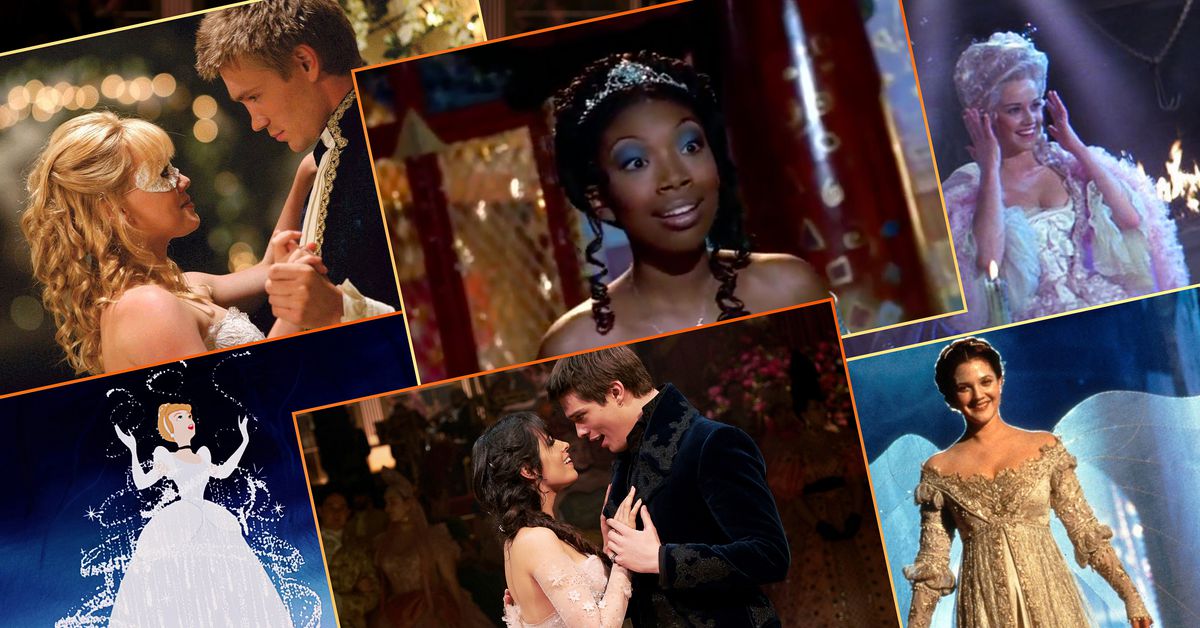
Some adaptions fit the glass slipper better than others
The Amazon Prime Cinderella movie didn’t go over well with critics, but in part that might be because it has so much competition in its field. There’s a vast pantheon of Cinderella movies — and Cinderella plays and musicals and radio shows and ballets, and basically every sort of adaptation under the sun. Versions of the story go back to ancient China and Greece, but the fairy tale version most American audiences will know is the Charles Perrault version, penned in the 1600s. It’s a timeless fairy tale that’s been retold over and over again, but writer-director Kay Cannon deliberately took big, modern risks with her new take on the tale. A jukebox musical? No villain? Girlboss Cinderella?
“How can I just make it different?” Cannon tells Viaggio247 about how she planned her version. “Because they’ve already done it, and they’ve already done a great job, and I can’t just redo the greatness.”
Modern audiences may look for some edgy new spin on the classics, but with all the pressure to make a different Cinderella story, it’s worth considering which ones stick closest to tradition. Can a Cinderella story still be a standout creative work if the only requirement is following the fairy-tale play-by-play? There are so many iterations of Cinderella out there, but the traditional American and British film adaptations can roughly be divided into five categories: animated, modern update, parody, live-action based on the story, and live-action based on the Rodgers and Hammerstein stage musical. To curate our list a little, I’ve selected the top-ranked Letterboxd movie for each of those categories.
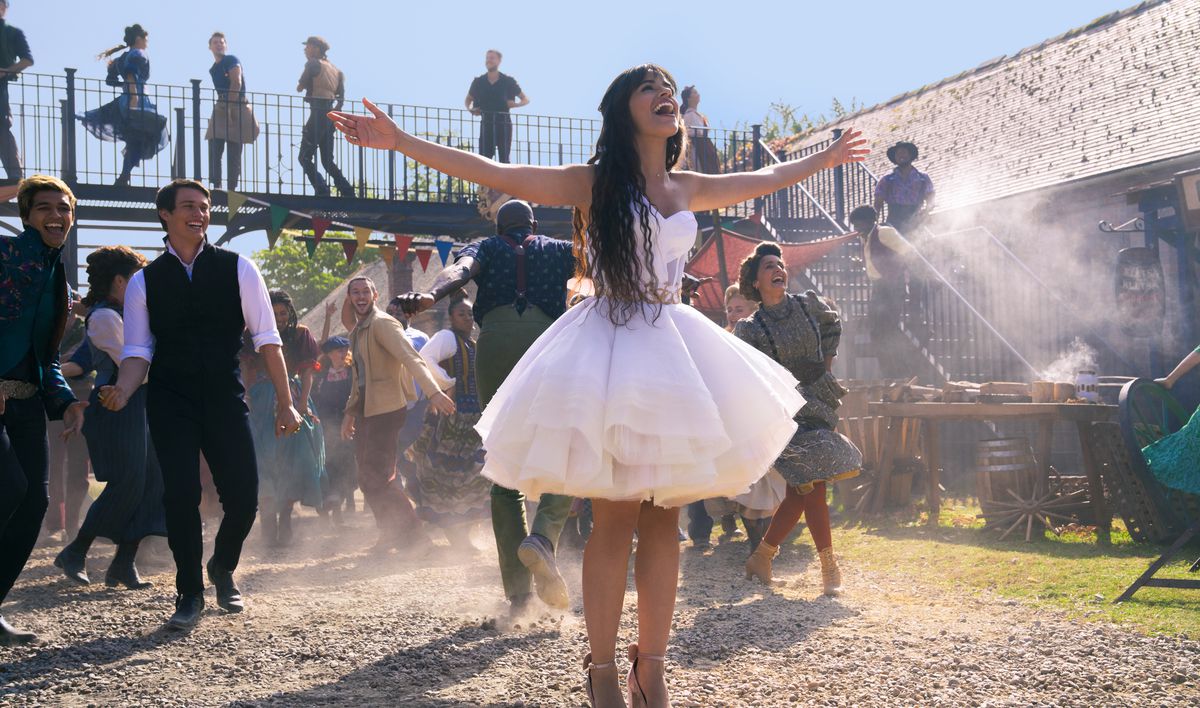
Photo: Amazon Studios
The parameters
To figure out how each movie iteration of Cinderella most accurately fits the fairy tale, we need to actually pick the parameters of the fairy tale. Perrault’s version introduced the most common Cinderella plot elements: the fairy godmother, the pumpkin she turns into a carriage, and the glass slipper. We’re evaluating each Cinderella mostly by the parameters of the Perrault story, with an exception for the other popular retelling from the Brothers Grimm. For a refresher:
The heroine: What defines a Cinderella story? The way the downtrodden heroine rises above her station. Her personality will vary, but the rags-to-riches journey is paramount.
Possible points here: 2 — 1 for starting at the bottom, 1 for coming out on top.
The prince: Traditionally, he’s a bland victory condition who doesn’t really do anything besides see Cinderella at the ball and fall in love with her.
Possible points here: 1 for existing.
The magical help: Not all movie Cinderellas feature magic, particularly the modern-day ones. But some form of wish-granting figure seems like a key part of the story.
Possible points here: 1 for some kind of outside help to get Cinderella to the ball!
The villains: The stepmother and stepsisters appear in most versions of the tale. While the Perrault version forgives them, the Grimm version sees them meet a cruel fate. We’re taking both into account both here, since the idea of horrible abusers getting off totally scot-free hasn’t aged well since the 1600s, and it rarely pops up in newer adaptations.
Possible points here: 3 — 1 for the stepfamily existing, 1 for them making Cinderella do their chores, and 1 for their fates being made clear.
The ball and all: There is a ball where the Prince is looking for a bride. Cinderella gets a swanky ballgown and a cool method of transportation. And she must get home by midnight, or else.
Possible points here: 4 — Pretty straightforward, 1 for the ball, 1 for the gown, 1 for the carriage, and 1 for the curfew!
The identifying item: It may be Perrault’s glass slipper or the Brothers Grimm’s gold one, but either way, it’s an important shoe, or variant thereof.
Possible points here: 3 — 1 for an item being left, 1 for it being successfully used to identify Cinderella, and 1 for the stepsisters trying to claim it’s theirs instead. A lot of points here, because the identifying item is paramount to the Cinderella story.
The revelation: Cinderella is found, and she and the Prince get married and live happily ever after! The fairy-tale version makes it pretty abrupt, but a lot of adaptations string it out.
Possible points here: 1 for being speedily resolved — perhaps it’s more interesting to introduce some third-act tension, but a pure Cinderella story will give our gal a happily ever after right away.
Overall Cinderating: 15 possible points for a perfect Cinderella. How will our movies do?
5. The Parody Adaptation: Ever After (1998)
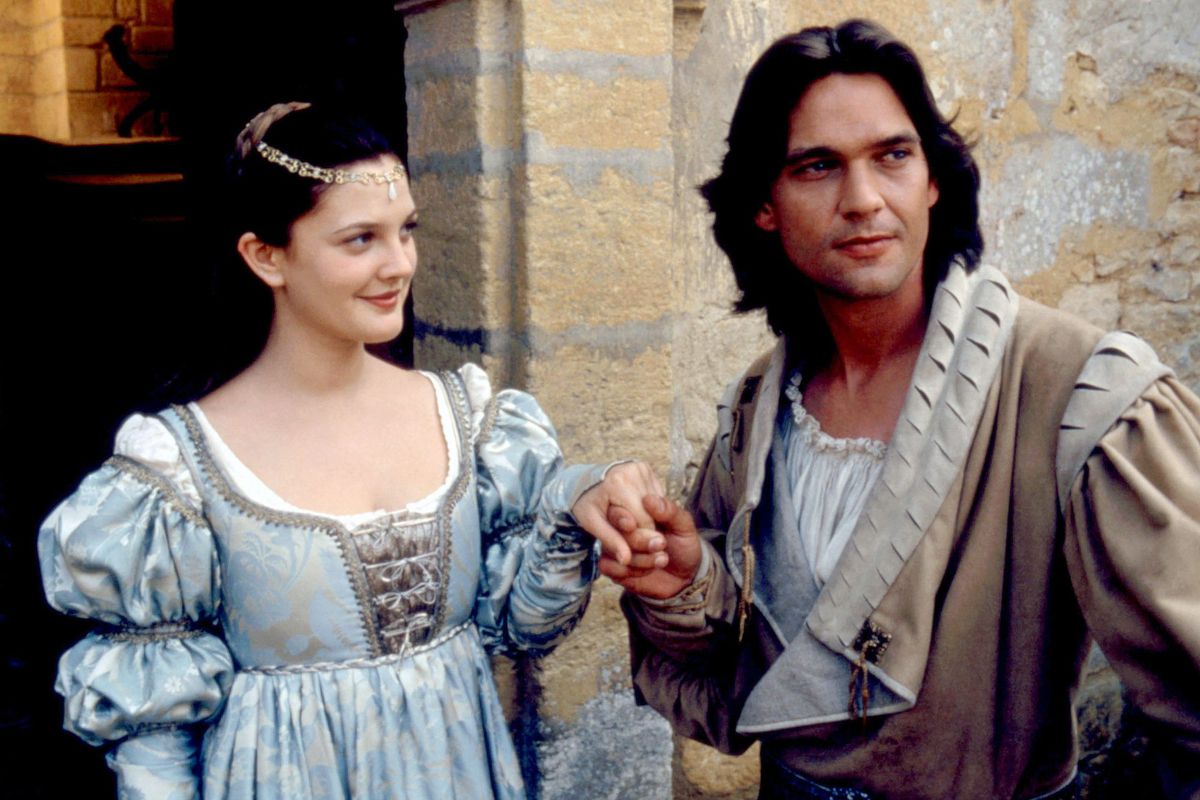
Image: 20th Century Fox
Ever After is perhaps the least traditional of all Cinderella movies. In this version, an old French aristocrat recounts the tale of a peasant girl to the Brothers Grimm themselves, setting the tale of Cinderella straight. Ever After fits Cinderella into a historical context, during the Renaissance Era, so it lacks the magical elements of some other retellings. But it makes up for it with more character motivations for both the Cinderella figure and the prince.
The heroine: Danielle de Barbarac (Drew Barrymore) is a young woman forced to play servant in her household after her father’s death. She knows she could run the manor better than her stepmother, who squanders their money and uses servants as surrogates for her own debt. Danielle comes into some money (the prince tosses her a bag of coins while “borrowing” a horse from her property) and disguises herself as a noblewoman to free her servant from the debtors’ prison. When prince sees her stand up to the prison guard, she introduces herself as “Nicole” (her mother’s name), a visiting noblewoman. Though they clash, their relationship eventually blossoms into something romantic, even though it’s built on a lie. By the end, though, they’re married and Danielle has the money she needs.
Score: 2/2
The prince: Prince Henry (Dougray Scott) doesn’t want to marry the Spanish princess his parents want him to wed, so he ends up running away. He meets a mysterious visiting noblewoman when returning to the castle, and is so impressed by the way she stands up to some guards that he begins to question his life of privilege. Eventually, she inspires him to proactively make his people’s lives better.
Score: 1/1
The magical help: In one of the best and most unexpected twists on the classic story, Cinderella’s fairy godmother is… LEONARDO DA VINCI! Yes, that’s right — artist and inventor Leonardo Da Vinci takes a liking to Danielle and hooks her up with some sweet angel wings for her dress.
Score: 1/1
The villains: Perhaps one of the most outright cruel stepmothers, Rodmilla (Anjelica Huston) is conniving and domineering — she sells off Danielle’s father’s possessions, and schemes for her older daughter to charm the prince so the family can live in luxury. She outright tells Danielle that she never loved her, throws a beloved book from Danielle’s father into the fireplace, and actively sabotages Danielle at the ball. At the end, the king threatens to banish her for lying to royalty, but Danielle figures a more fitting punishment will be for Rodmilla and her oldest daughter to work in the castle for the rest of their lives. (The younger stepsister gets a redemption arc instead.)
Score: 3/3
Ball, ballgown, carriage, curfew: There is a ball, and Danielle repurposes her mother’s old gown, but the carriage doesn’t have anything fancy to go along with it, and there is no specific curfew. In fact, Danielle shows up at the ball and within moments, her stepmother reveals that she isn’t the noblewoman she claims to be.
Score: 2/4
The identifying item: While Danielle does leave a shoe, and the prince does put it on her at the end after he decides to damn propriety and chase after her, it’s never really used to identify her, since by that point he knows her real identity.
Score: 1/3
The revelation: The prince gets pissed when he finds out that Danielle has been lying to him, and he has to do some internal growth before he goes after her — just as she’s been promised in marriage to a lecherous neighbor. It’s purposefully messy, since in real life, this happy ending would not pan out so smoothly.
Score: 0/1
Overall Cinderating: 10/15 — Hey, Ever After is the least traditional one! With the historical lens and the interrogation of some of the more fairy-tale-like elements, Ever After was probably destined to rank lowest on the Cinderanking scale. Still, if you’re in the mood for a Cinderella story where Cinderella has motivations and agency, with a love story beyond eyes meeting across the room, then Ever After certainly checks all those boxes. This is a motivated Cinderella who doesn’t feel grating, whose dreams fit the time period, and whose compassion is strong and not spineless.
4. The Modern Adaptation: A Cinderella Story (2004)
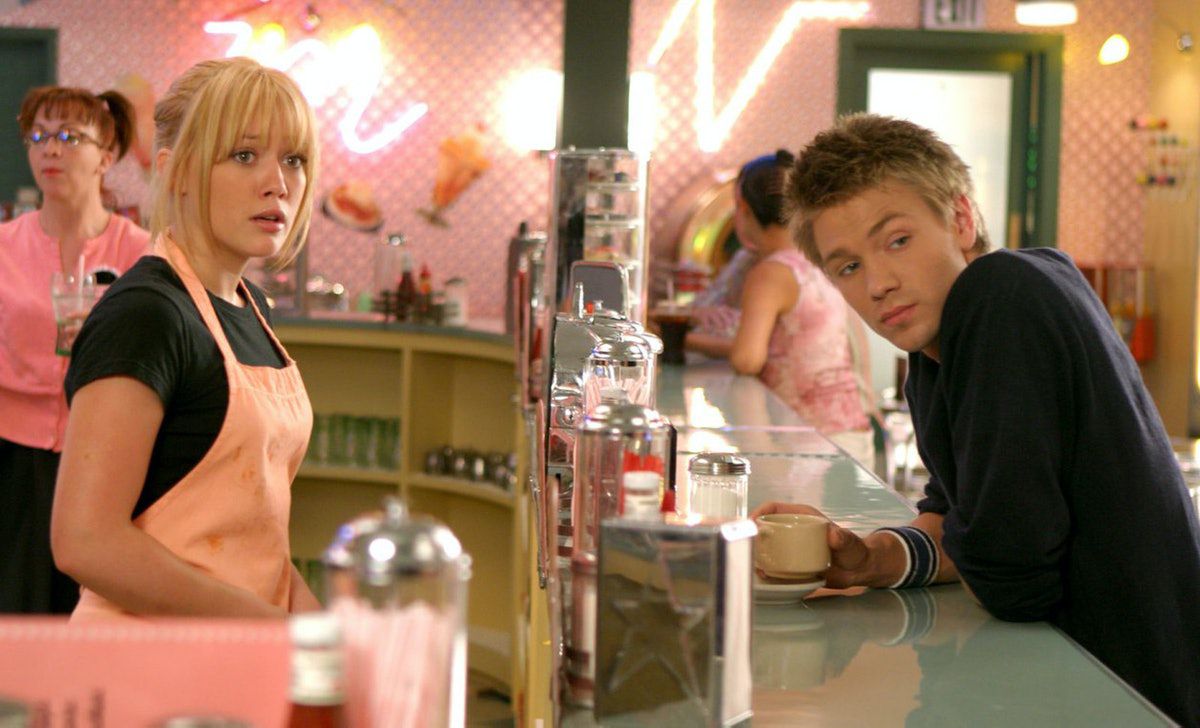
Image: Warner Bros. Pictures
Since A Cinderella Story premiered in 2004, there have been five sequels under the “Cinderella Story” name, each starting over with new characters, and each giving the fairy tale a modern twist. Every iteration has grown more extravagant — the prince is a pop star, or the cast is putting on a musical version of Cinderella, or there’s a Christmas theme, or something else.
But the original modern Cinderella story is simple: The prince is a popular boy at school, and the heroine is a down-on-her-luck loser. They have no idea that they’ve been secretly texting each other, after meeting anonymously on a message board for aspiring Princeton students, and they decide to meet up at the school’s Halloween Homecoming dance. Will social convention keep them apart?
The heroine: Sam Montgomery (Hilary Duff) is a straight-A student who not only runs around doing her stepmother’s ridiculous chores, but also picks up extra shifts at her family’s diner. Her dad’s will was never found, so all the money and the diner went to her stepmother by default, and to save up money for Princeton, Sam has to do what she says. Sam’s character growth comes from finding the courage to stand up to her stepmother and move out — and she eventually finds her father’s will, which leaves her everything! Score! Her transformation has less to do with the prince, and more to do with her own self-esteem (and some key legal documentation).
Score: 2/2
The prince: Because we’re in early 2000s California and not once upon a time, our prince comes in the form of class president and football star Austin Ames (Chad Michael Murray), who secretly dreams of going to Princeton and becoming a writer.
Score: 1/1
The magical help: There is no magic in this version — but there is the magic of found family and friendship! The staff of the diner comes together to help Sam get to the Halloween Homecoming dance. Rhonda (Regina King), the diner’s manager, even gives Sam an old wedding dress that she just happens to have lying around.
Score: 1/1
The villains: Not only does A Cinderella Story have the evil stepmother (Fiona, played magnificently by Jennifer Coolidge) and stepsisters, it also has an evil posse of mean cheerleaders led by Austin’s ex-girlfriend. They also meet their cruel fate in the end, and have to go to work in the diner. Gasp!
Score: 3/3
Ball, ballgown, carriage, curfew: In lieu of a ball, we have a Halloween Homecoming. Sam gets a ballgown in the form of an old wedding dress. And she has to get back to the diner by midnight, because that’s when Fiona will return. There is no cool carriage, however, just her friend’s dad’s Mercedes, which doesn’t really undergo any transformation.
Score: 3/4
The identifying item: In lieu of a glass slipper, Sam leaves her bedazzled cell phone behind! Very early 2000s chic. Unfortunately, it never really gets used as an identifying item, and her sisters never claim it’s theirs.
Score: 1/3
The revelation: The interesting thing about this version of Cinderella is that the entire Cinderella plot happens within the first half of the movie. The remaining half revolves around Sam waffling about whether she should tell Austin that she’s his mystery girl. When that does eventually come to light via Austin’s ex, the story pivots to Austin figuring out what he wants from life. Sam does get a pretty great moment of character growth when she tells Austin she can’t wait around for him, and also tells Fiona that she’s through with being treated like a servant. The ending is happy, but not the speedy resolution of a Cinderella story.
Score: 0/1
Overall Cinderating: 11/15 — The first of the modern adaptations is definitely the best. Turning Sam’s ultimate goal to Princeton instead of a prince is a cute modernization, and the fact that she and Austin meet on an internet chat forum makes their secret relationship particularly compelling. Unfortunately, the most frustrating part of this movie is Austin, who must go through the whole “This isn’t my dream, Dad, it’s yours” character arc. But Sam grows from someone who can’t stand up for herself into someone who takes control of her own destiny.
3. The Live-Action Adaptation: The Slipper and the Rose (1976)
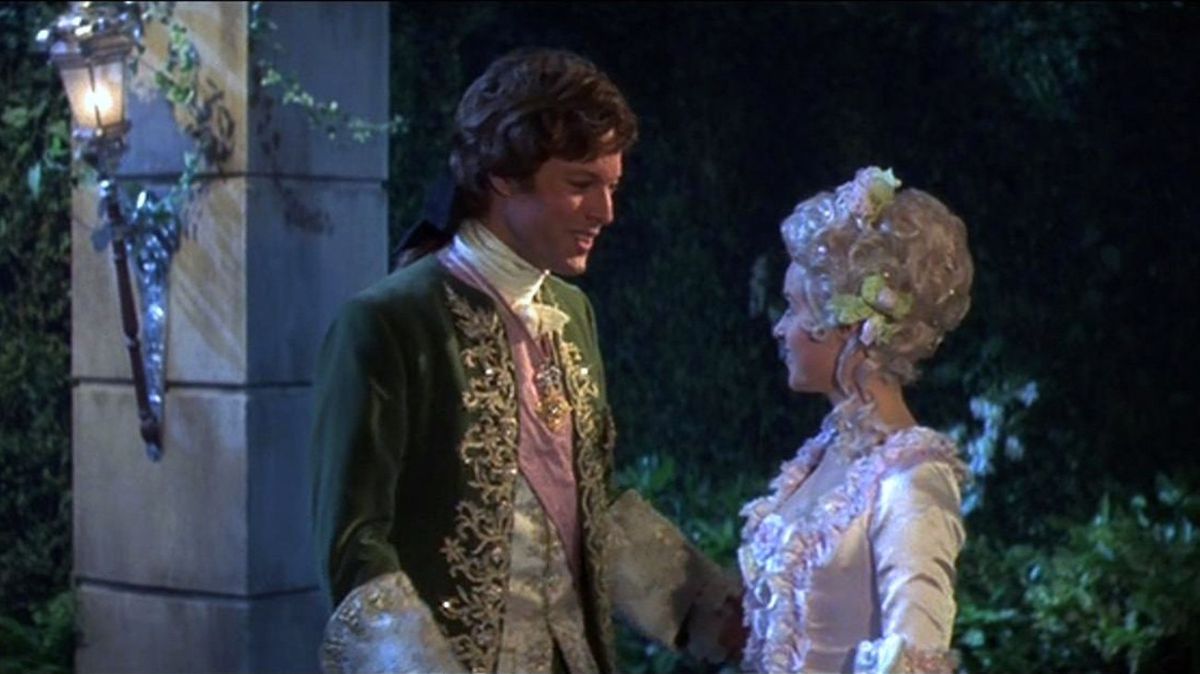
Image: David Paradine Productions
Technically, this live-action version of Cinderella is a musical, but it isn’t based on the classic musical that launched so many copycats, so it counts as a regular adaptation. (Also, you’ll be hard-pressed to find an adaptation of Cinderella without any singing at all.) While The Slipper and the Rose is a Cinderella retelling, it also puts a lot of focus on the political turmoil in Cinderella’s fictional country, which puts pressure on its prince to find a bride. Cinderella’s whole schtick is basically the same — an orphan with a cruel stepmother — but this version also offers up a very long song about rules and propriety in the great nation of Euphemia. Fun!
The heroine: Freshly orphaned as of the start of the movie, Cinderella (Gemma Craven) is banished to the basement of her father’s house and forced to do the stepmother’s menial chores. She meets Prince Edward at the ball and they fall in love. He wishes to marry her, but the king and his advisors warn her that it would put the kingdom at risk, and promise her that they’ll provide for her, but she cannot marry him. She understands what this means for the kingdom, so she graciously agrees — and tells an advisor to tell Edward that she never loved him, so he won’t tear down the kingdom looking for her.
After this, though, the king realizes that she acted exactly like a proper ruler should’ve in this situation, and regrets sending her away. But that’s okay, because the fairy godmother comes around to make it all right, and Cinderella and the prince get married after all.
Score: 2/2
The prince: Prince Edward (Richard Chamberlain) wants to get married for true love, but his parents want a political alliance. What’s a poor rich boy to do?
Score: 1/1
The magical help: A fun twist with this fairy godmother (Annette Crosbie) is that she’s also helping out a bunch of other folklore figures offscreen — she mentions Snow White, Robin Hood, and Scheherazade, among others.
Score: 1/1
The villains: A mean stepmother (Margaret Lockwood) who’s said to have tricked Cinderella’s father into marriage now forces Cinderella to do all the household chores, after firing the rest of the staff. In the end, Cinderella forgives them, before being whisked away to her new life in the palace.
Score: 3/3
Ball, ballgown, carriage, curfew: There is a ball to find a bride. Cinderella gets a gorgeous ballgown and a swanky carriage. And she must leave the ball before midnight.
Score: 4/4
The identifying item: This one is weird. Cinderella does leave behind a shoe, but the prince kinda keeps it in a weird monument, and then in a fit of frustration, throws it out of his carriage. She finds it in a field and starts dancing with it, and the prince’s best friend spots and recognizes her. Is it because of the shoe, or because of the dancing?
Score: 1.5/3
The revelation: After the prince and Cinderella find each other, they still have a political situation to untangle. Everything ends up fine in the end, of course, but there is a long road — and a whole lot of songs! — before that happens.
Score: 0/1
Overall Cinderating: 12.5/15 — The Slipper and the Rose would be a highly traditional Cinderella, if not for the political subplot. There is a lot of emphasis on propriety and tradition, which makes the prince declaring his intention to marry a peasant girl all the more dramatic. If it weren’t two and a half hours of sometimes unnecessary songs, it could be a sweet, romantic tale about defying class differences.
2. The Animated Adaptation: Cinderella (1950)
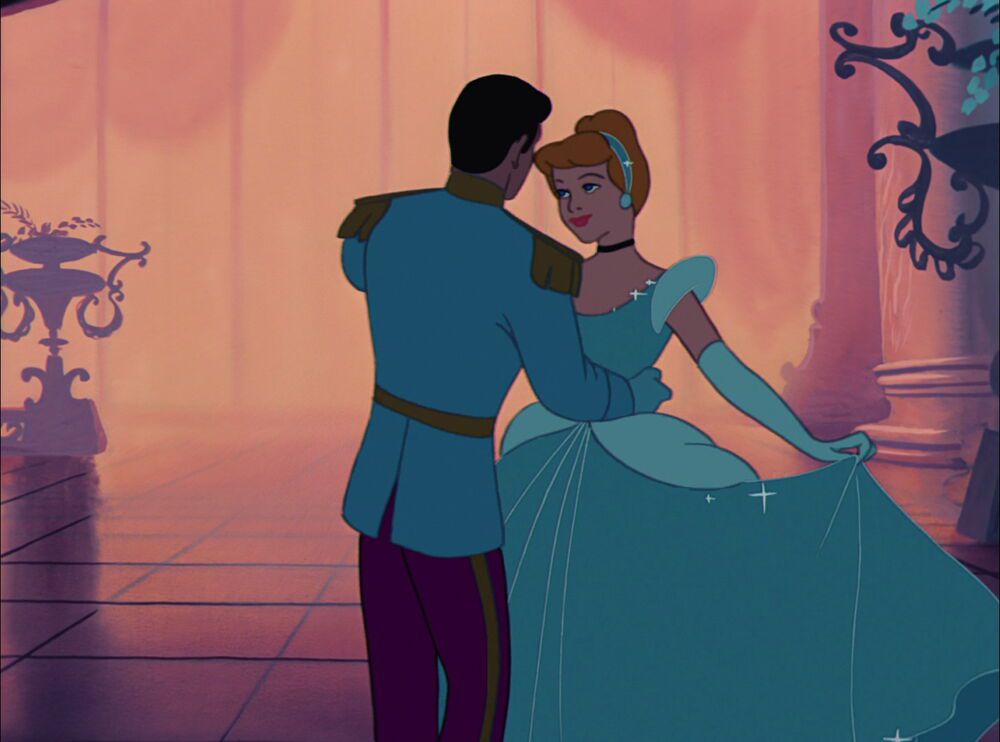
Image: DIsney
The Disney animated version is the archetypal Cinderella that most Americans probably visualize when they think of Cinderella. This movie actually features comparatively little of Cinderella and her prince. It spends a lot of time on mouse hijinks, with a weird side focus on the prince’s father and the kingdom’s archduke.
The heroine: Cinderella is a kindhearted young woman who assumes the best out of everyone, including her awful stepmother, and has a soft spot for small animals. Aside from her animal friends, she is lonely. Her father is dead. By the end of the movie, she’s happily married to the prince and she gets to go live in his fancy castle.
Score: 2/2
The prince: Does not even have a name! Or much of a character, really, which is consistent. All we know is that for some reason, he isn’t super eager to get married. Admittedly, Prince Charming gets more character in the Cinderella direct-to-video sequels (which are amazing and add some surprising nuance to all the characters), but as it stands here, he’s boring, and barely in the movie.
Score: 1/1
The magical help: In the Disney animated version, the magical help comes in the form of the Fairy Godmother, a kindly, homey woman voiced by Verna Felton. She’s a traditional, classic version of the character, basically an ersatz grandmother. This version also incorporates the “small animal friends” element that the Brothers Grimm story introduced.
Score: 1/1
The villains: This version keeps the classic stepmother and stepsisters who order Cinderella around. They don’t get redeemed at the end, but they also don’t suffer a terrible fate. (Unless you check out those sequels — seriously, they’re surprisingly awesome.)
Score: 2/3
Ball, ballgown, carriage, curfew: The king throws a ball to help his son find a wife. Cinderella gets a gorgeous ballgown. A pumpkin gets turned into a carriage, and Cinderella’s animals friends become footmen! And she must get home before midnight comes, when all her magic will run out. Check, check, check, and check!
Score: 4/4
The identifying item: Sticking with tradition here with a glass slipper! Yes, the stepsisters try it on and can’t make it fit. And yes, it does get used to identify Cinderella — with the fun little plot twist that the one she left behind winds up shattered, but our gal Cindy proves her identity by pulling out the second one.
Score: 3/3
The revelation: People tend to give the prince shit for not recognizing the girl he danced with all night, but in his defense… He isn’t actually the one who went out to find her! That’s left to the archduke, which is true to the Perrault version. Once the archduke learns that she’s the mystery girl, she and the prince have a lovely white wedding and ride off in a carriage. Huzzah!
Score: 1/1
Overall Cinderating: 14/15 — The animated Disney version almost hits all the marks. It’s the go-to for a reason, but people who haven’t revisited it recently might be surprised at how quirky and mischievous this Cinderella actually is. She makes snarky asides about the stepmother and stepsisters, and definitely has more personality than most people give her credit for. The love story isn’t much beyond eyes-meeting-across-the-room, but sometimes the tried-and-true approach works. If it ain’t broke, don’t fix it!
1. The Musical Adaptation: Cinderella (1997)
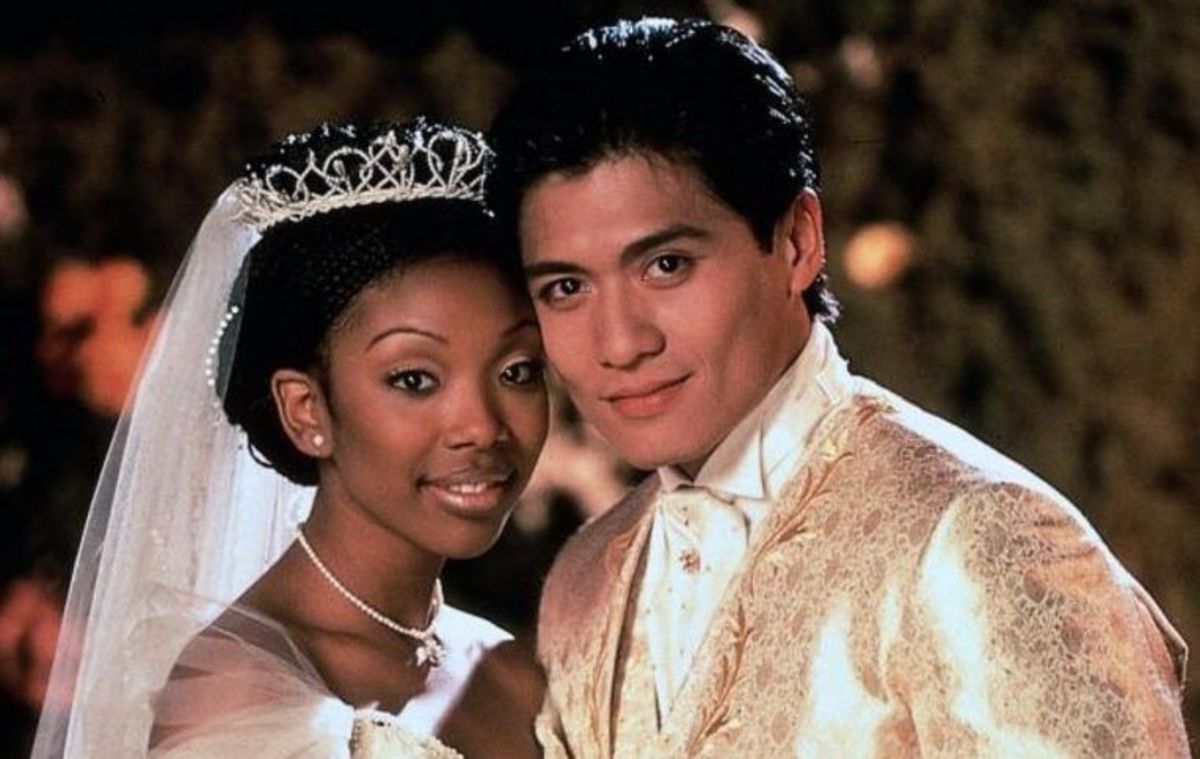
Image: Disney
A lot of these Cinderellas involve some kind of music, but this one is specifically an adaptation of the 1957 Rodgers and Hammerstein musical, and Letterboxd’s users actually rank it slightly above the original version. Notable for its colorblind casting, this version of Cinderella — affectionately known as “the Brandy Cinderella” for its lead actress — has an all-star cast, including Brandy, Whoopi Goldberg, Whitney Houston, Bernadette Peters, and Jason Alexander.
The heroine: Cinderella, as played by Brandy, is a sweet but deeply lonely young woman with a big imagination. She meets the prince of her country by chance on the streets at the beginning of the movie, not knowing he’s royalty, and the two hit it off. By the end, they’re in love and married, and Cinderella gets to leave the little basement she was confined to!
Score: 2/2
The prince: Christopher (Paolo Montalban) is a hopeless romantic who feels stifled by his station, and would rather wander around in public than go through the pomp and circumstance of being a prince.
Score: 1/1
The magical help: A fairy godmother played by Whitney Houston is a dream come true. She also narrates!
Score: 1/1
The villains: The stepmother, played by Bernadette Peters, just wants her daughters to win the hand of the prince! She also makes Cinderella do all the chores and carry all their groceries. The step-family’s fate gets a quick, quick resolution at the end — they’re locked out of Cinderella’s royal wedding, and while they reach through the gates, she clearly hasn’t forgiven them yet.
Score: 3/3
Ball, ballgown, carriage, curfew: The prince’s parents throw a ball for him to find a suitor. Cinderella gets her dress transformed into a gorgeous blue ballgown. The Fairy Godmother transforms a pumpkin into a golden carriage. And Cinderella must get home before midnight.
Score: 4/4
The identifying item: True to tradition, Cinderella leaves behind the glass slipper, and her sisters (and stepmother!) fight over whether they can make it fit and steal the prince’s affections. When the prince sees Cinderella, to his credit he does recognize her, and he repeats what he said during their first meeting, for extra romance points. But he still offers her the shoe to wear, to seal the deal on her identity.
Score: 3/3
The revelation: Sure enough, right after the shoe fits, the happy couple kisses and the fairy godmother whirls her wand to clothe them in wedding garb. Huzzah, the wedding is abruptly underway! Very efficient! Very happily ever after!
Score: 1/1
Overall Cinderating: 15/15 — Not only does the Brandy Cinderella have a perfect Cinderating, it’s also an enjoyable movie in its own right. The songs (some of which come from the Rodgers and Hammerstein version) are infectiously catchy and don’t drag. The costumes and set design are bright and distinct, and Cinderella and the prince have a connection that goes beyond love at first sight. The side characters are all memorable, with perfect notes of humor to round out the more straightforward romantic arc. Overall, the Brandy Cinderella is the perfect blend of tradition and ingenuity.
Ever After, Cinderella (1950), and Cinderella (1997) are available to stream on Disney Plus. A Cinderella Story is available on Netflix. The Slipper and the Rose is available on YouTube for free.
